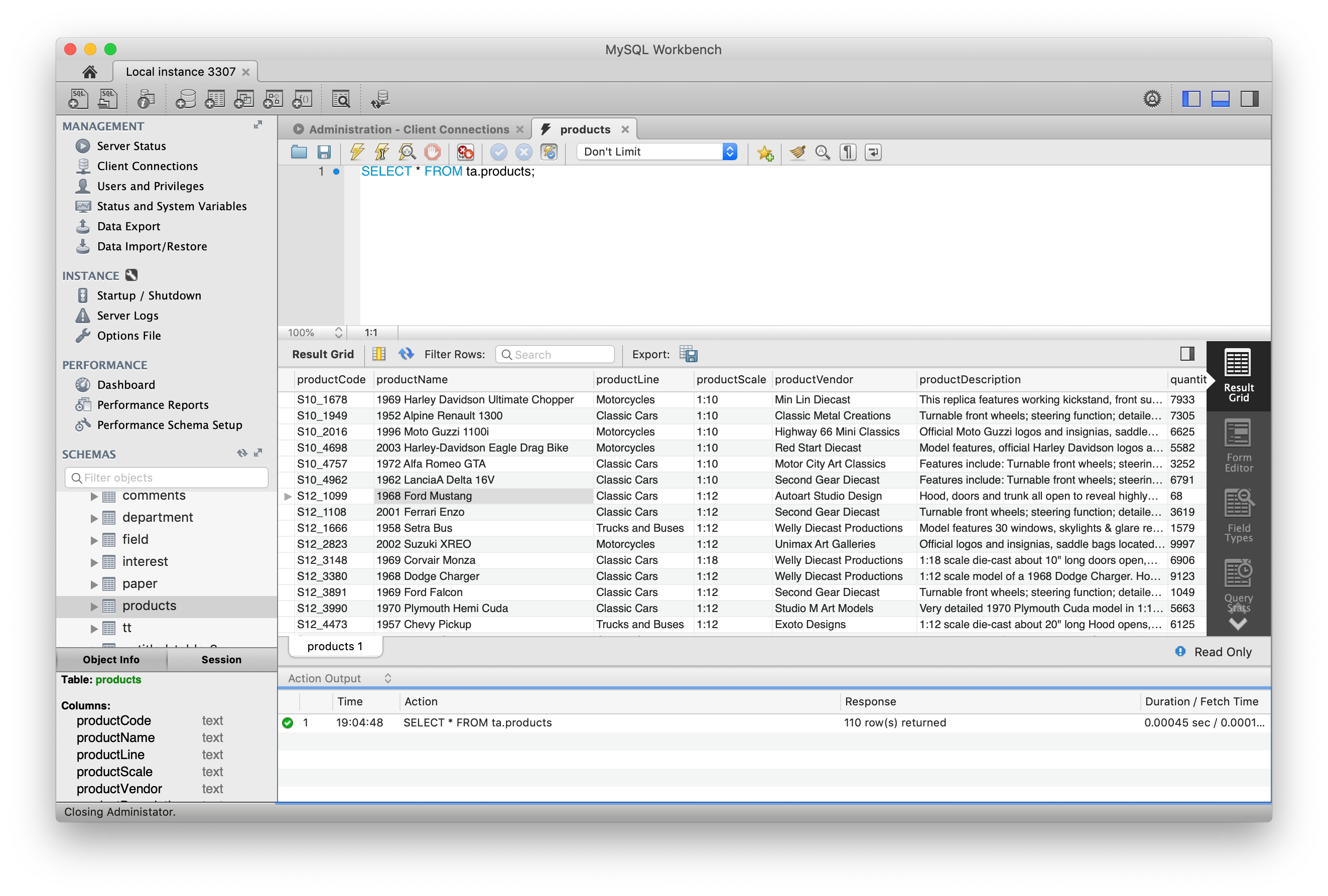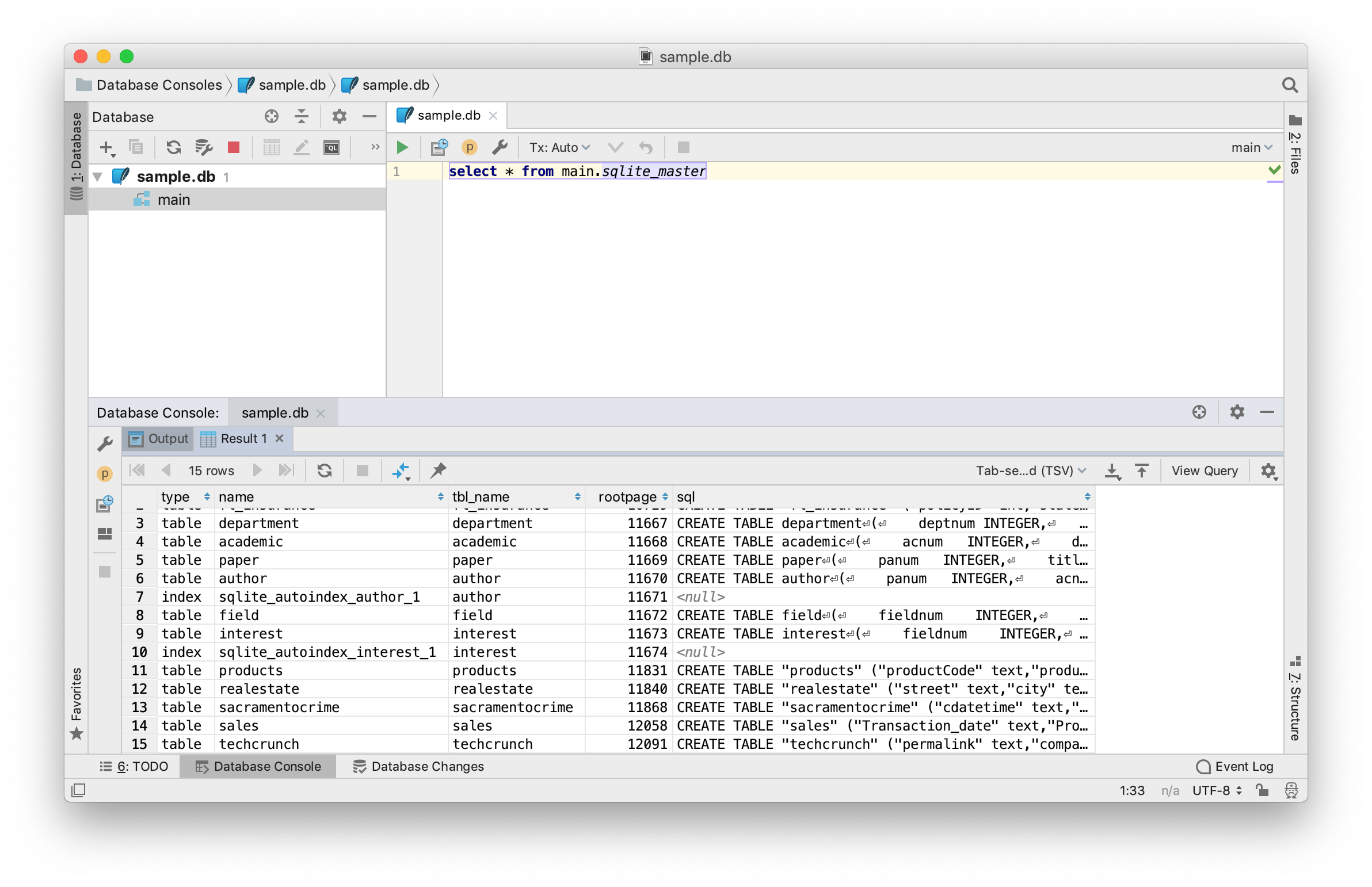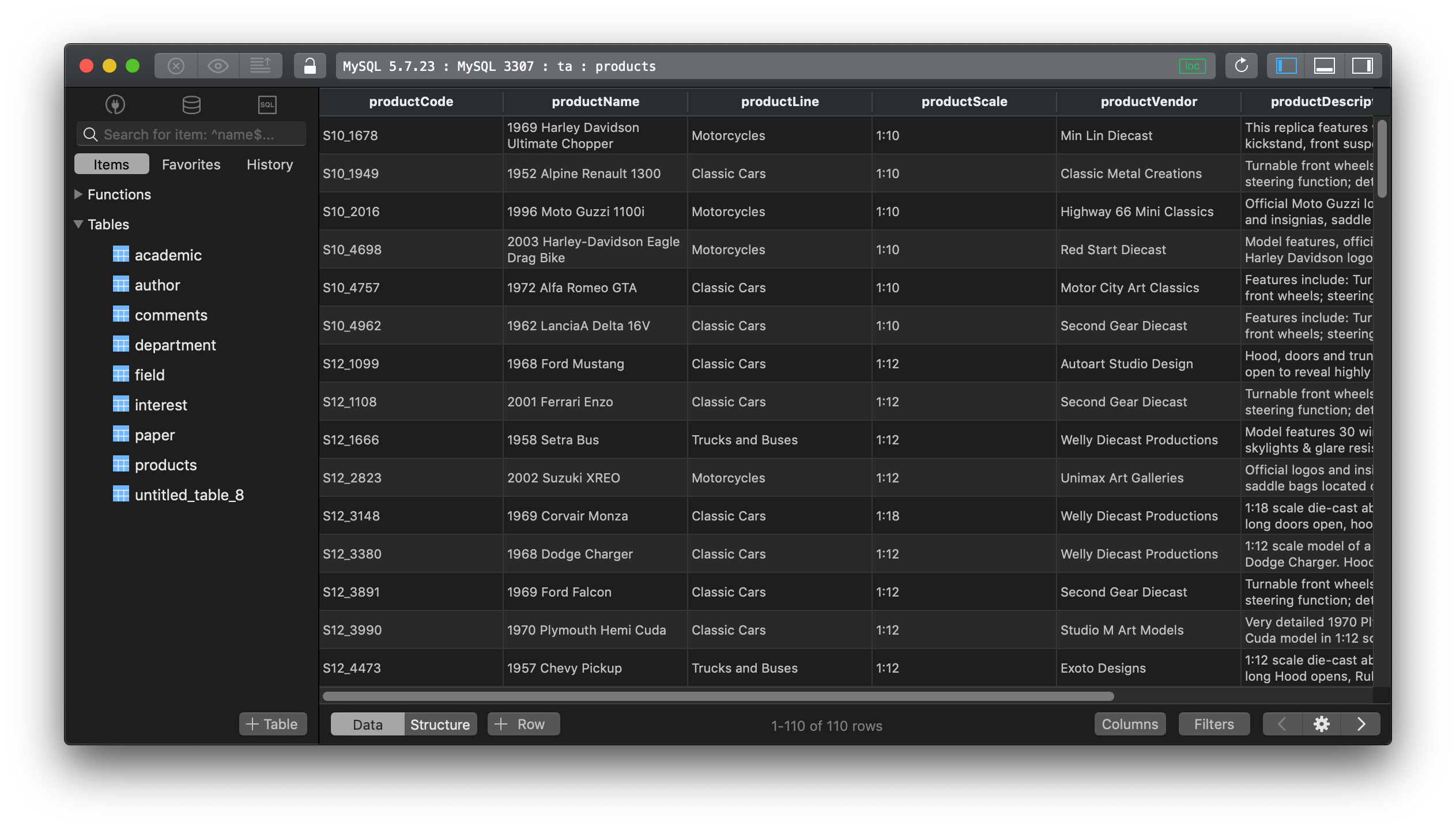MySQL Workbench vs DataGrip vs TablePlus - Quick Comparison
If you are having a hard time choosing a good database tool to work with between MySQL Workbench, DataGrip, and TablePlus, take a look at this post. We are going to compare the pros and cons of those three tools and see which one is better for you.
1. MySQL Workbench
MySQL WorkBench offers a full-featured administration tool for MySQL on multiple operating systems.
-
Supported platforms: MySQL Workbench is cross-platform. It’s available on Mac, Windows, Linux.
-
Supported Drivers: MySQL Workbench supports all versions of MySQL because it’s built by the MySQL at Oracle.
-
Pricing: MySQL Workbench also has a community version which is free and open source. The other two commercial versions for enterprises are subscription based with enterprise features and support.

Pros:
- It’s cross-platform. In case you work on more than one operating system, you don’t have to use a different tool and the experiences will be consistent.
- It includes everything a data modeler needs for creating complex ER models
- It has a Visual Performance Dashboard
- A complete and easy to use tools for database migration.
- Ability to cancel long queries without hanging.
- It provides fast access to server status and other information.
- It shows multiple result sets.
- It’s easy to create and edit views, procedures & functions.
Cons:
- It only supports MySQL and MariaDB. If you work with more database other than MySQL and MariaDB, it’s a huge drawback.
- The UI is unintuitive. It is packed with a lot of features. It’s definitely not a tool for beginners.
- It complicated and overkill to perform simple tasks.
- It’s resource intensive.
- It crashes a lot too.
2. DataGrip
DataGrip provides robust tools that streamline SQL code writing and make the entire process more efficient.
-
Supported platforms: DataGrip is cross-platform too. It works well on macOS, Linux, and Windows.
-
Supported Drivers: DataGrip supports a lot of databases: Postgres, MySQL, Oracle, SQL Server, Azure, Redshift, SQLite, DB2, H2, Sybase, Exasol, Derby, MariaDB, HyperSQL, Clickhouse.
-
Pricing: DataGrip doesn’t have a community version. You can download and use the free trial for 30 days, then you need to pay for a subscription service. It costs $8.9/mo for an individual and $19.9/mo/user for business.

Pros:
- It supports multiple drivers.
- It has smart context-sensitive and schema-aware code completion.
- A visual table editor lets you add, remove, edit, and clone data rows.
- It has version control support.
- Refactoring support.
Cons:
- It’s not user-friendly. It takes time to learn how to use it.
- It doesn’t run fast, compared to similar tools. It will be very sluggish when working with high-volume databases.
- It can use up to several GB’s of memory.
- The cost is relatively high.
3. TablePlus
With a native build and a lightweight size, TablePlus is a very handy database GUI Client for multiple databases.
-
Supported platforms: TablePlus is built native for each platform. It started out with a native version for Mac, then another version for Windows, and a version for Linux was introduced recently as an alpha release. It also has an iOS version.
-
Supported Drivers: TablePlus supports a handful of relational databases: MySQL, PostgreSQL, SQLite, Microsoft SQL Server, Amazon Redshift, MariaDB, CockroachDB, Vertica, Oracle; and two popular NoSQL databases: Cassandra and Redis.
-
Pricing: TablePlus has a free version with full set of features which you can download and use forever, but there are some usage limitations. If you use it heavily, the license costs $59 to remove all those limitations.

Pros:
- Native build for each platform so it’s fast, lightweight, and stable.
- Clean and simple interface.
- Multiple drivers support
- Multiple conditions data filter
- Queries history and keyword binding favorite.
- Streaming results and async loading to show queries results faster and doesn’t block the UI.
- Very quick inline editing for table data and structure, you also can edit query results directly.
- Smart query editor with highlight syntax, instant autocomplete, SQL reformat.
- Multiple carets
- A plugin system to extend the app.
- Quick support. TablePlus releases new updates regularly and responds to users’ requests almost immediately.
Cons:
It currently lacks of some advanced features such as ER Diagram, database compare tool to Diff and Sync, etc.
4. Conclusion
Go with MySQL Workbench if you:
- Work with MySQL only
- Need a tool to get the job done
Go with DataGrip if you:
- Work with multiple databases
- Are comfortable with the cost
- Don’t mind the slugginess
Go with TablePlus if you:
- Are a fan of native experience
- Work with multiple databases
- Want a modern design with better usability
- Want quick support & development cycle.